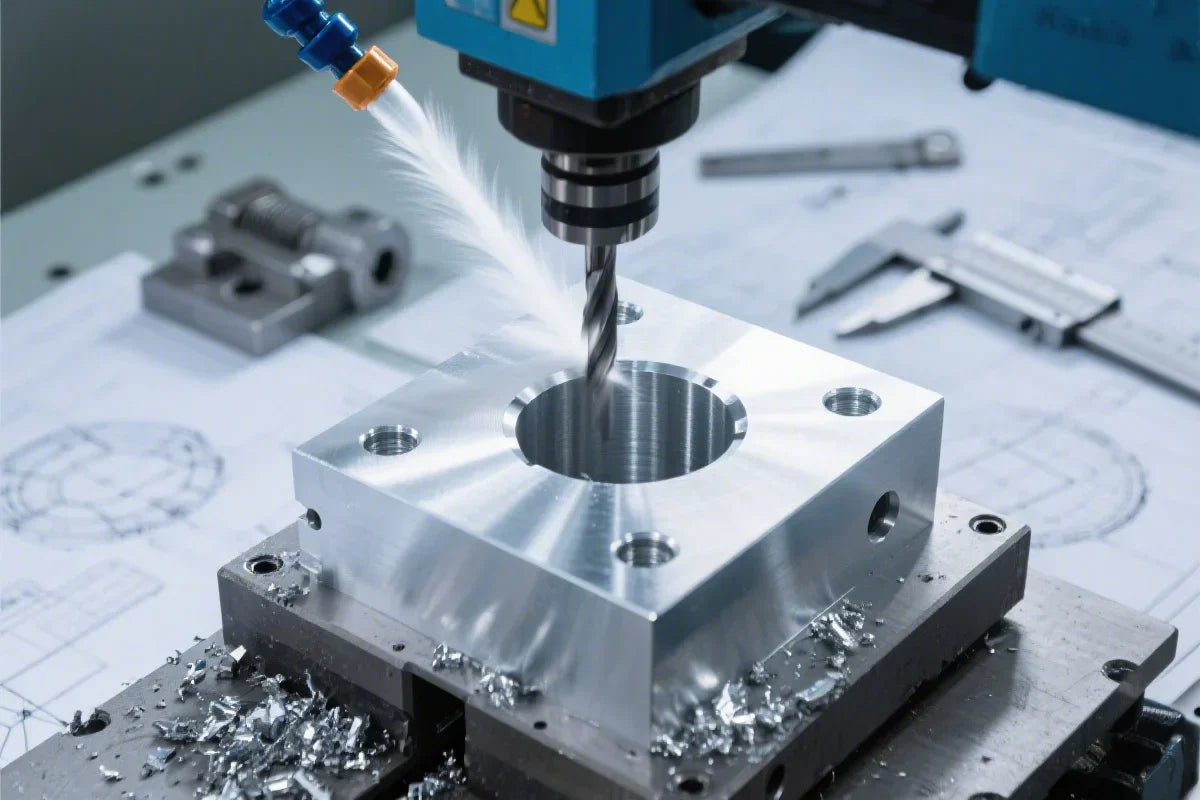Introduction
CNC machining with the Carvera and Carvera Air CNC machines offers high precision and automation capabilities, making them ideal for both prototyping and small-scale production. However, designing a part for these machines requires careful consideration to optimize machining efficiency, reduce tool wear, and improve surface finish. Below are essential design principles tailored specifically for Carvera and Carvera Air CNC machines.
1. Material Selection for Carvera CNC Machines
The Carvera CNC machines can handle a variety of materials, including plastics, aluminum, wood, and soft metals like brass, aluminum, and copper. Softer materials like acrylic, MDF, and aluminum are ideal for smooth cutting with minimal tool wear. Harder materials require slower cutting speeds and depths and may benefit from specialized tooling to prolong tool life. When designing parts, always consider the final material selection and the size. Also, make sure that the material and the part will fit on the Carvera or Carvera Air bed.
Creating prototypes for specific components or critical design features helps verify machinability, structural integrity, and surface finish quality.
2. Minimizing Undercuts and Complex Features
Carvera CNC machines operate with standard, non-proprietary rotary tools, so undercuts and complex internal features should be minimized. If undercuts are necessary, consider using a T-slot cutter or ball-end mill where applicable, or redesign the part to allow standard tool access. Additionally, parts can be rotated and mounted on another axis using a jig to machine features that may not be accessible in the initial position.
3. Choosing the Right Fillet Sizes
Since Carvera CNC machines use rotary tools, sharp internal corners are not possible without additional post-processing. Designing internal fillets with a radius of at least 1.5 times the tool diameter allows for smoother tool movement and reduces stress on the cutter. Smaller tools can be used for secondary finishing to achieve a sharper internal radius. For example, if a 0.5mm radius is required, a 3.175mm tool may initially create an inner radius of 1.59mm. A subsequent pass with a 0.8mm tool can refine the corner to the correct size. If parts need to interlock, designing with dogbone-style inner corners can be an effective solution.
Learn more about different dogbone options here: Elegant CNC Dogbones.
4. Selecting Appropriate Hole Sizes
To reduce machining time, design holes using standard drill sizes (e.g., 3.175 mm, 4 mm, 6 mm, or 1/4'') that match Carvera’s available collet sizes or the drill sizes you have on hand. For high-precision fits, slightly undersizing the hole and finishing with reaming or tapping is recommended. Alternatively, a smaller end mill can be used to pocket out a hole to the correct size.
5. Avoiding Deep Cavities
Deep pockets can be difficult to machine efficiently on Carvera CNC machines due to tool deflection and chip removal challenges. A good practice is to limit cavity depths to three to four times the tool diameter. If deeper cuts are required, consider using multiple passes or step-down machining. In most materials, achieving very deep grooves requires air assistance to aid chip extraction.
6. Tool Length Considerations
For Carvera CNC machines, using shorter tools whenever possible is recommended. Shorter tools reduce deflection and vibration, leading to more accurate cuts and better surface finishes. Choose the shortest tool that can effectively reach the required depth to optimize machining performance.
7. Reducing Setup and Workholding Complexity
The Carvera CNC’s automatic tool changing, and the Carvera Air’s quick toolchanger, along with workpiece holding tools and anchor point features, make setup easier. However, designing flat surfaces and avoiding excessive overhangs further improves workholding and machining efficiency.
8. Designing for Efficient Carvera CAM CNC Toolpaths
Different toolpaths improve machining efficiency and surface quality:
- Contour Cuts: Used for cutting along an outline, whether inside, outside, or directly on a line. Carvera supports high-precision contouring.
- Pocketing: Used to remove material from within a boundary, great for creating cavities and recesses.
- Drilling: A dedicated process for efficiently creating holes with drill bits.
- Chamfering: Used to create beveled edges for improved aesthetics and assembly ease.
- 3D Relief Machining: Used for engraving or sculpting 3D surfaces with ball-end mills.
- Rotational Relief: Allows machining on multiple faces or cylindrical objects using rotary features.
Conclusion
By following these CNC-friendly design principles specifically for Carvera and Carvera Air CNC machines, you can achieve high-quality, efficient machining results. Considering these factors early in the design process ensures smooth manufacturing and precise final products.


Navigating the US-China Tariff War: Why Investing in a Desktop CNC Now is a Smart Move
DIY 3-in-1 Easter Egg Holder & Phone Stand – Perfect Easter CNC Project